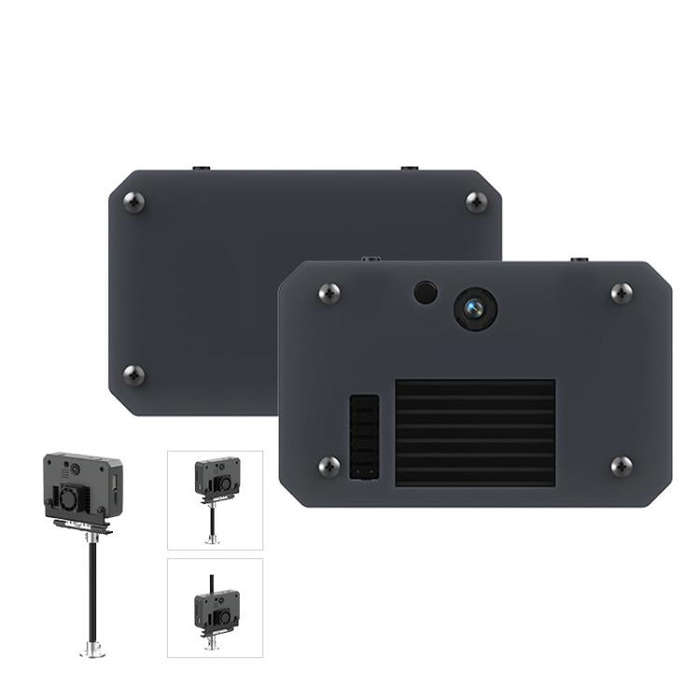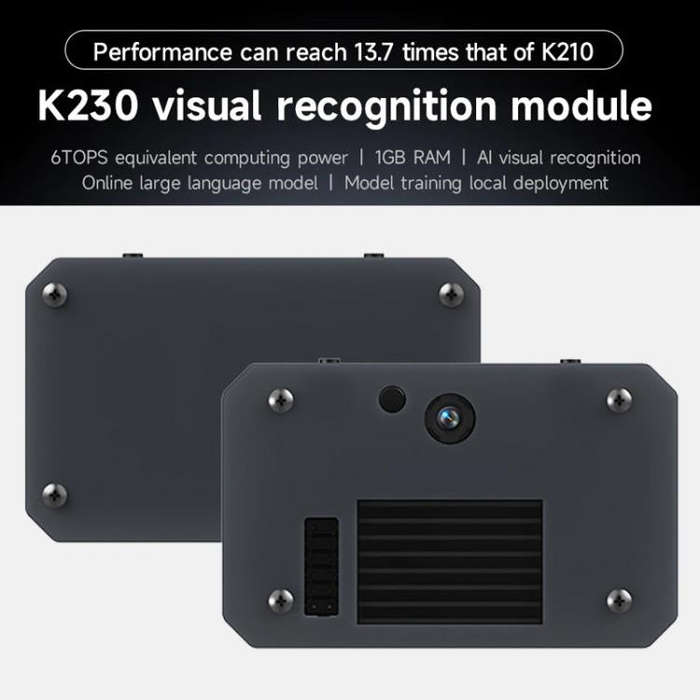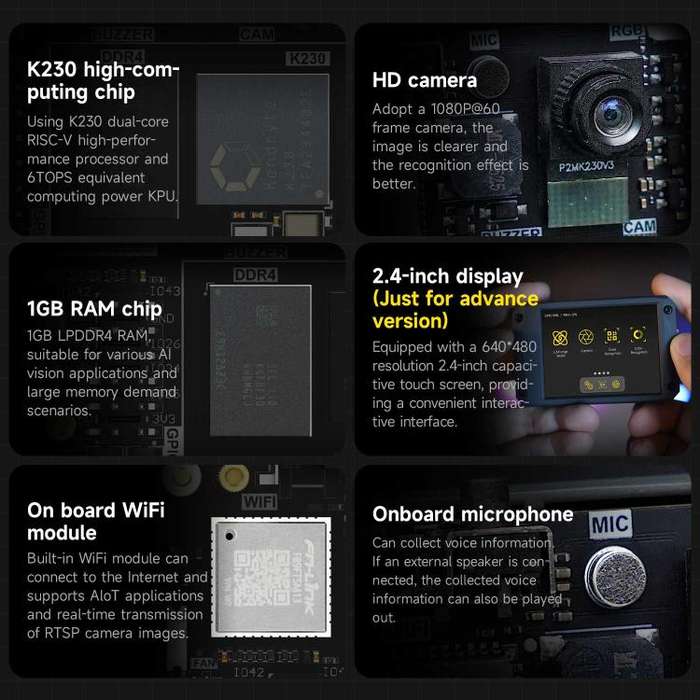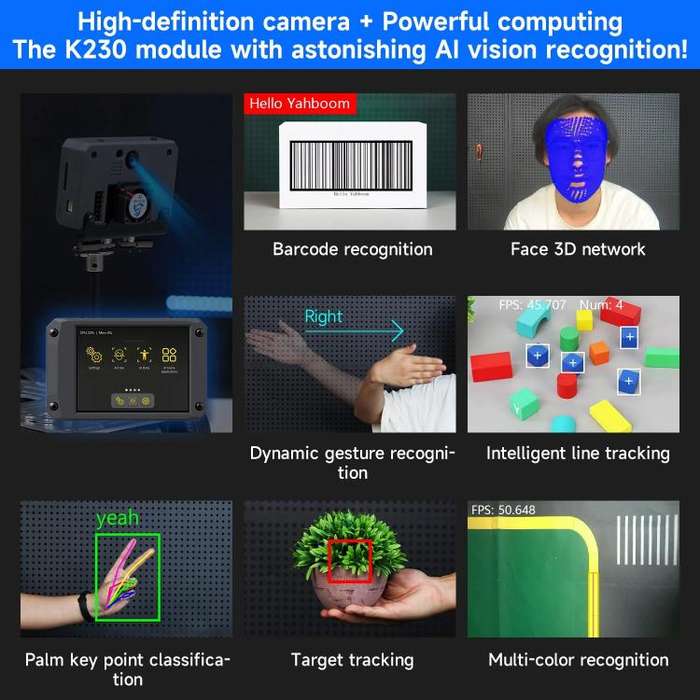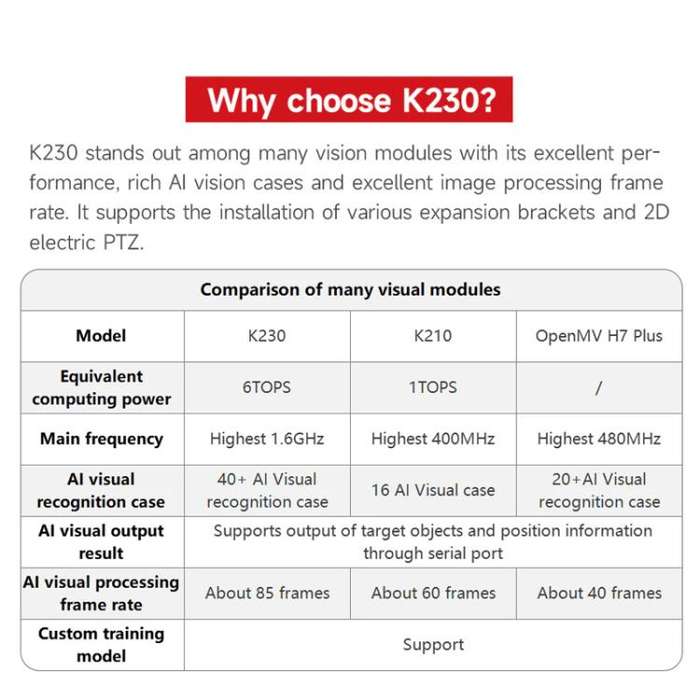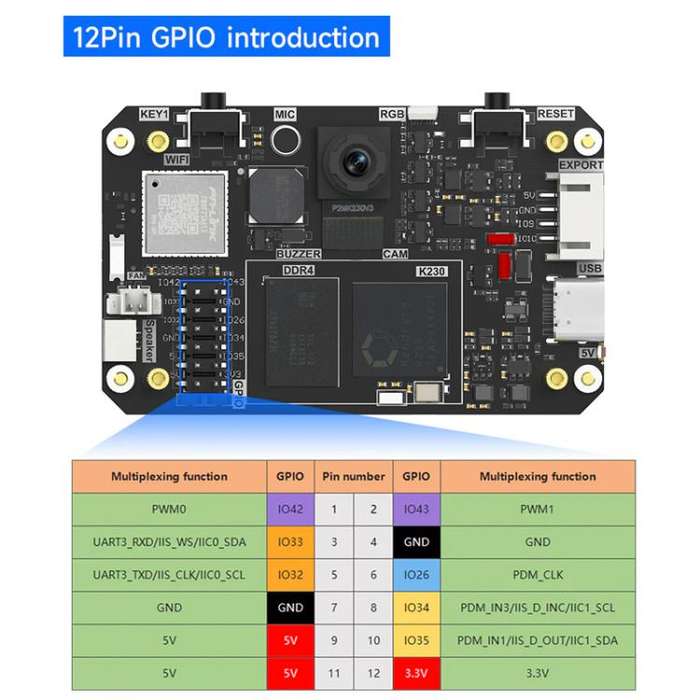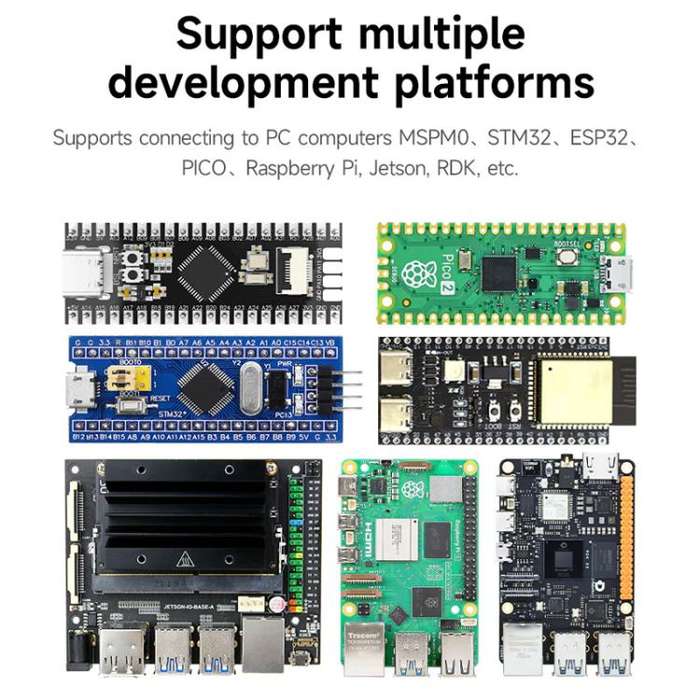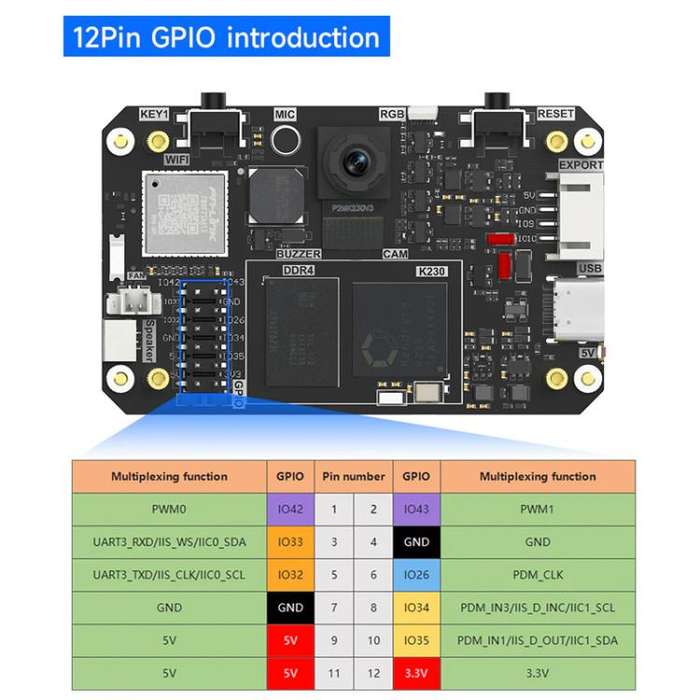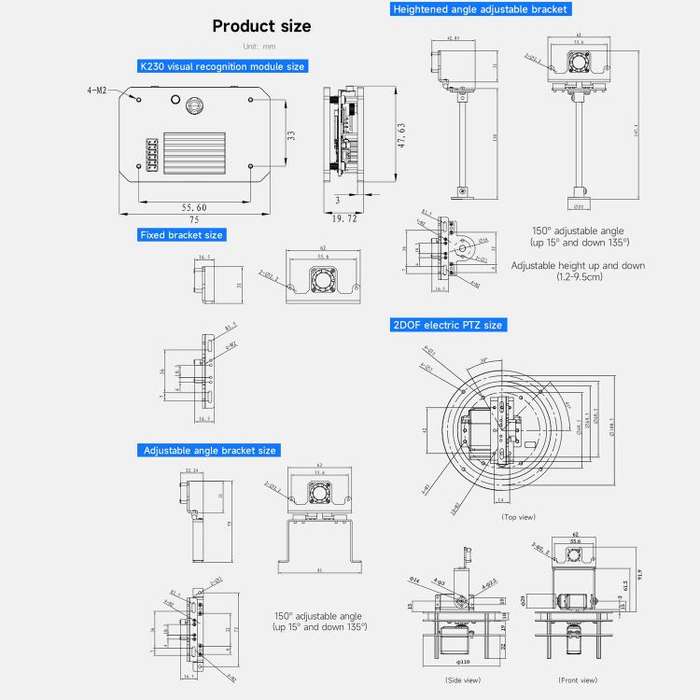1. The K230 visual recognition module is equipped with a 1080P/60FPS high-definition camera, is compact and exquisite, and can be easily integrated into various AI visual application scenarios. It is an ideal choice for electronic competitions.
2. The K230 is programmed and developed using MicroPython language. Users can easily handle multiple visual applications such as color recognition, object counting, QR code recognition, face recognition, character recognition, and self-training without mastering AI model algorithms, greatly lowering the threshold for AI learning.
3. The module integrates a WiFi chip and supports IoT connections. It can be connected to a cloud platform to access large language models, enabling intelligent dialogue and voice question-answering functions.
4. Windows-based upper computer software is provided, supporting RTSP real-time video stream monitoring, and integrating video/image processing tools, data generators, text tools, and other contents.
5. Audio processing support: The K230 integrates a microphone and supports audio recording, enabling keyword wake-up and voice-to-text functions. Combined with large language models, it can conduct language dialogues and provide an intelligent interactive experience.
6. Expandable speaker: It supports external speakers and, in combination with large language models, can achieve voice dialogue. It can also be linked with AI image processing functions to broadcast visual recognition results in real time.
7. Supports multiple development platforms: It can be connected to PC computers, MSPMO, STM32, ESP32, PICO, Raspberry Pi, Jetson, RDK, and other mainstream controllers for development.
8. CanMV development environment: The K230 visual recognition module uses CanMV IDE as the development environment. It is simple and convenient to operate, with the IDE providing function input parameter and related content prompts. The code does not require compilation and can be modified and debugged online. The code can be directly downloaded to the K230 module for operation.
9. Additionally, we provide over 100 development resource tutorials and program source codes to facilitate users secondary development and learning, helping you realize various rich AI creative projects.
Parameters:
1. CPU:
--CPU 0: RISC-V processor, 0.8GHz, 32KB I-cache, 32KB D-cache, 128KB L2 Cache
--CPU 1: RISC-V processor, 1.6GHz, 32KB I-cache, 32KB D-cache, 256KB L2 Cache, 128bit RVV 1.0 extension
2. KPU:
--6TOPS equivalent computing power, support INT8 and INT16
--Typical network performance: Resnet 50 equals 85fps at INT8; Mobilenet_v2 equals 670fps at INT8; YoloV5S equals 38fps at INT8
3. DPU: 3D structured light depth engine, maximum resolution supports 1920 x 1080
4. VPU:
--Encoder performance: 3840 x 2160 at 20fps
--Decoder performance: 3840 x 2160 at 40fps
--JPEG codec: supports up to 8K (8192 x 8192) resolution
5. Running memory: 1GB LPDDR4
6. Development environment: CanMV IDE microPython programming
7. Image input: Onboard 2 million HD camera (GC2093)
8. Onboard functions: microphone, buzzer, RGB light, WiFi network card
9. Onboard interface: speaker interface, fan interface, Type-C interface, serial communication interface, GPIO expansion interface, TF card slot
10. Power supply: Type-C/communication interface 5V input/GPIO 5V input
11. Working current: 0.6A
12. Working power: 3W
13. Buttons: reset button + custom function button
14. Size: 75 x 47 x 19.7mm
